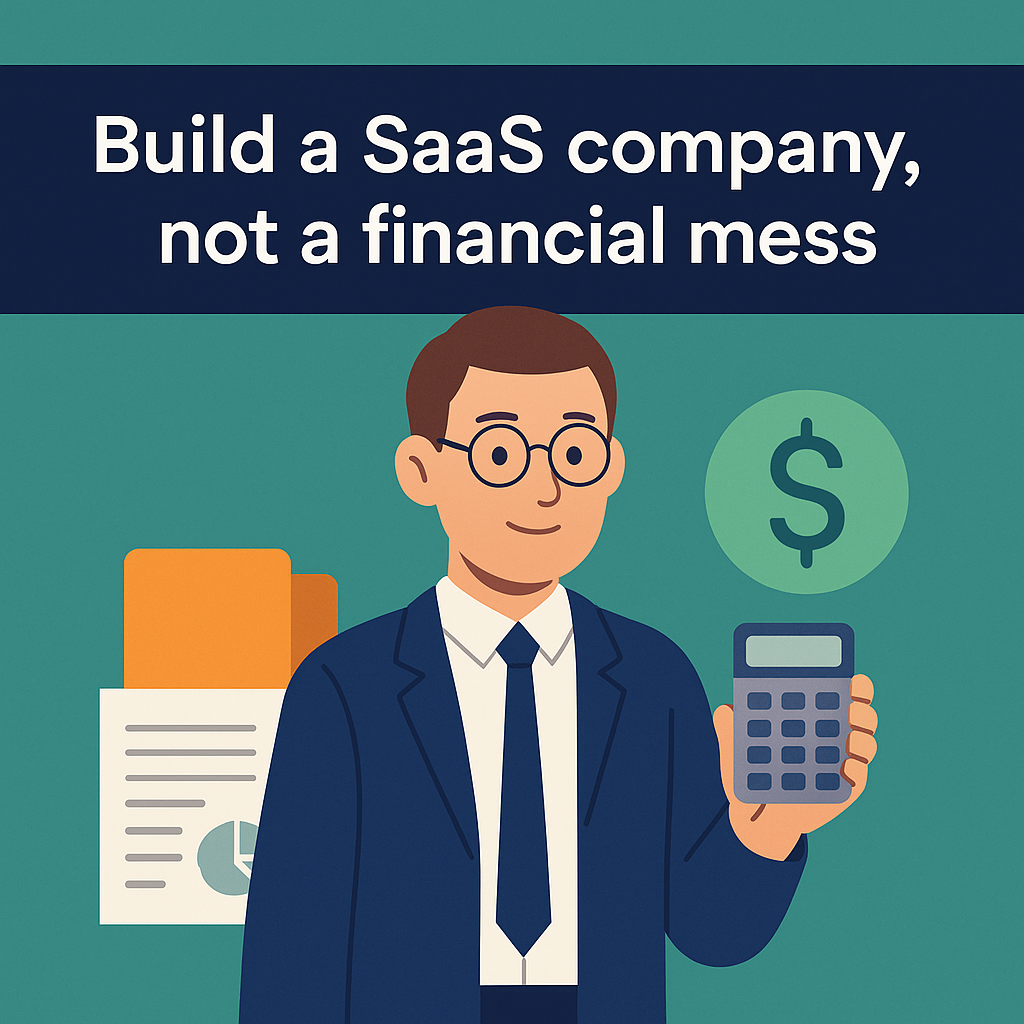Build a SaaS company, not a financial mess
When you’re building a bootstrapped SaaS company in Australia, there are a million things screaming for your attention - product, sales, marketing, funding, customer support, even hiring. But there’s one thing I’ve seen too many founders (myself included) put on the backburner for too long: accounting.
Now before you zone out because you think this is going to be a boring finance lecture, hear me out. I recently sat down with Roman Galikov, one of my best mates and our advisor here at SixSides. He’s also the co-founder of Recit Advisory - an accounting and advisory firm that works with startups like ours.
Roman and I go way back. We worked together at RedEye, battled in a year-long table tennis tournament, and yes, there was a time I ripped my pants mid-game before a trade show. But more than that, he’s someone who’s seen dozens of startups scale, stall, or implode - and financial hygiene is often the difference.
Founders love to ignore accounting (until it bites them)
Accounting feels like admin. It’s not sexy. It doesn’t get you customers. And for most early-stage founders, it’s just another expense that feels easy to delay.
But what Roman made clear is that ignoring your numbers early on doesn’t just make your life harder later - it can actually cripple your ability to grow.
The reality is: if you don’t understand your cashflow, margins, runway, or customer acquisition costs, you’re not running a business - you’re gambling.
We’re not saying you need to become a CPA overnight. But you do need to understand the basics well enough to make decisions that won’t come back to bite you in 12 months.
Why DIY accounting is fine - until it isn’t
One of the biggest mistakes Roman sees is founders trying to save a few bucks by doing it all themselves. That’s totally understandable, especially in the zero-to-one phase when you’re just trying to get something off the ground.
But if your chart of accounts is a mess, your transactions are misclassified, or your SaaS metrics are fuzzy - it’ll catch up with you. Especially when you go to raise capital, hire employees, or try to scale. Investors look at messy books and think: “Hard pass.”
Clean books = better decisions = stronger business.
SaaS businesses need to be built with intention
Roman walked me through how a healthy SaaS business should be structured from a financial point of view. Here’s what stood out:
- 80 percent gross margin is the goal - this includes your infrastructure and customer support costs.
- Sales, marketing, and R&D should be tracked as their own buckets.
- Founders should know the difference between revenue and invoicing (this one got me).
- You need to be honest about your unit economics and runway.
- Hiring too early can suck the oxygen out of your business.
There’s also a real risk in bringing on employees before your systems are ready. Whether it’s a developer, a customer success person, or a salesperson - their salary isn’t just a number. It’s time, focus, management overhead, and financial pressure. If you get it wrong, it can cost you months of progress and momentum.
Equity isn’t free - and your cap table matters
Another trap bootstrapped founders fall into is being too casual with equity.
“I’ll give them 10 percent now and figure it out later.”
That works until you realise your cap table is now a dog's breakfast. Investors hate messy cap tables. Founders hate giving up control. And no one wants to fund a business where one of the original co-founders is sitting on 50 percent and doing nothing.
**Roman’s advice? **Be deliberate. Use vesting schedules. Think about the long game. And if you're bootstrapping, remember that every bit of equity you hold onto gives you optionality later.
Build for where you are - not where you think you’ll be
One of the best things Roman said was this:
“The systems and processes you put in place should solve the problem you have now - and the one you expect in the short term. But expect to rebuild everything later.”
That’s the reality of a growing SaaS business. What worked at $10K MRR won’t work at $100K MRR. Your billing process, reporting cadence, even your accounting tools - all of it evolves.
So yes, you should start scrappy. But don’t confuse scrappy with sloppy.
Signals > noise
This chat also made me reflect on how we’re building SixSides. We’re bootstrapping, getting early traction, and applying for grants. We’re watching the signals - customer feedback, early revenue, market pull - and ignoring the noise.
As founders, especially in Australia, we don’t have the luxury of endless venture capital. We need to be efficient. We need to think like operators. And we need to treat financial clarity as a growth enabler, not a cost centre.
Because the truth is, most SaaS businesses don’t fail because of bad ideas - they fail because of bad financial decisions made early.
So, if you take anything away from this, it’s this: get someone like Roman in your corner. Not just to tick the compliance boxes, but to help you think more clearly about your business.
Whether you’re at zero customers or twenty, the numbers don’t lie - but you can definitely lie to yourself if you’re not watching them.
Want help getting your financial house in order?
Check out Recit Advisory or connect with Roman on LinkedIn.
And if you haven’t yet, listen to Episode 21 of Our B2B SaaS Journey where we go deep on this stuff - and share a few stories that didn’t make it into this blog.
